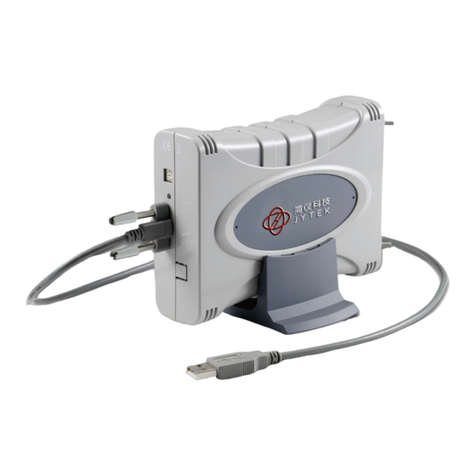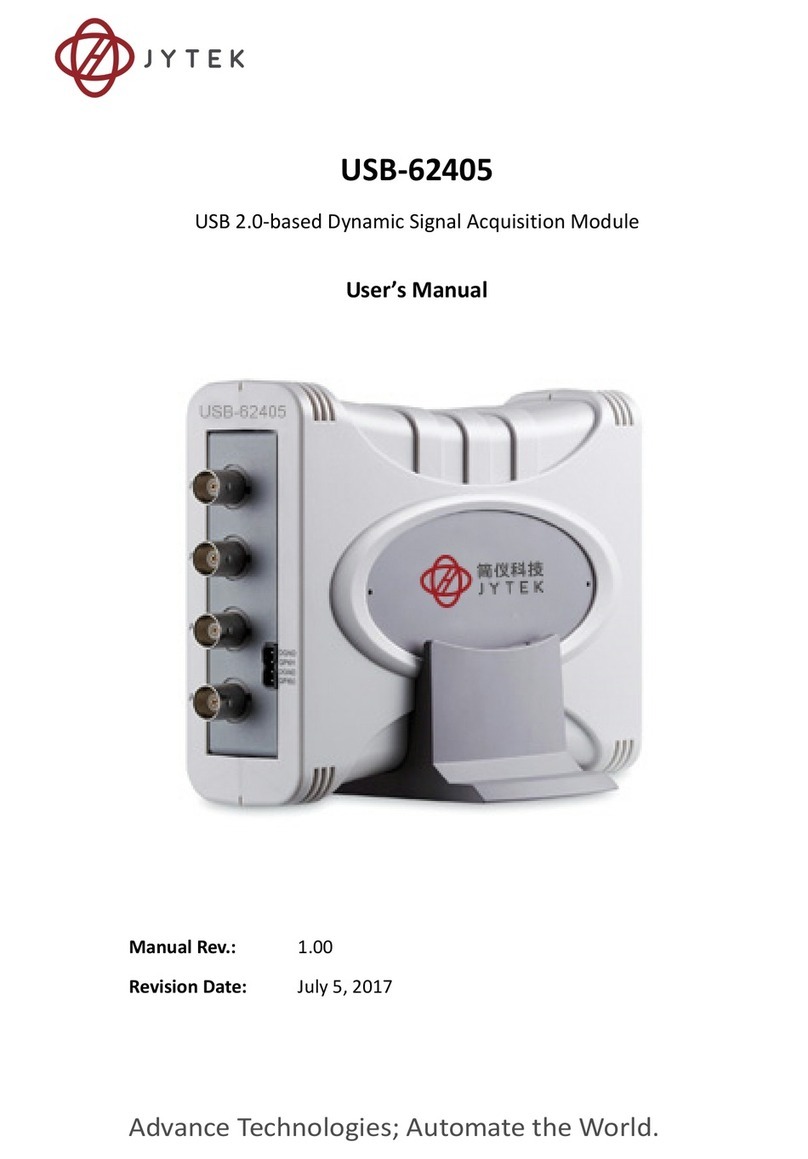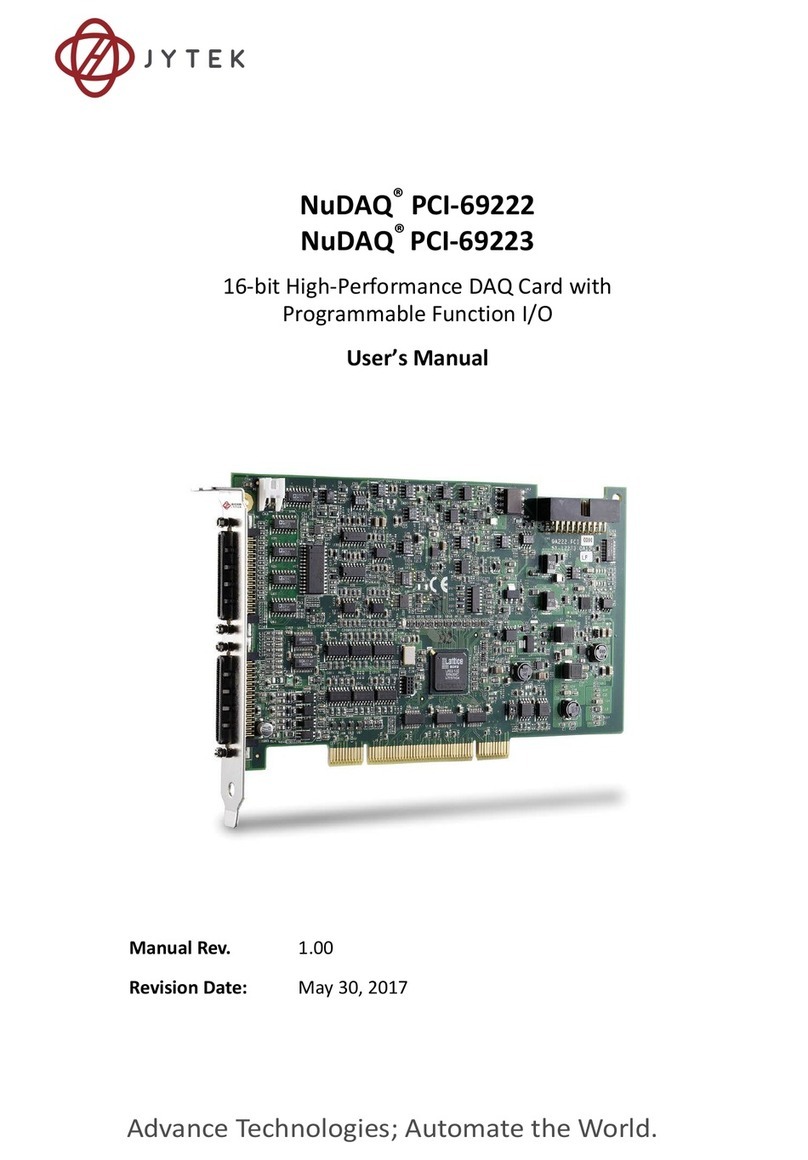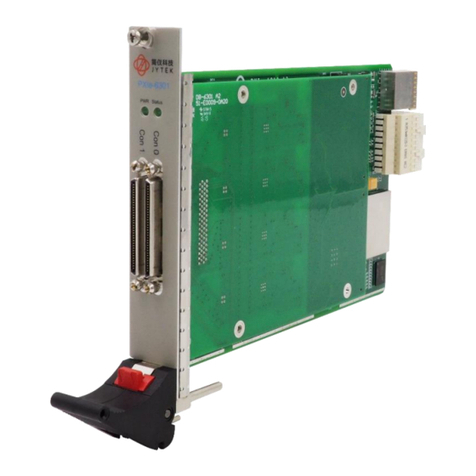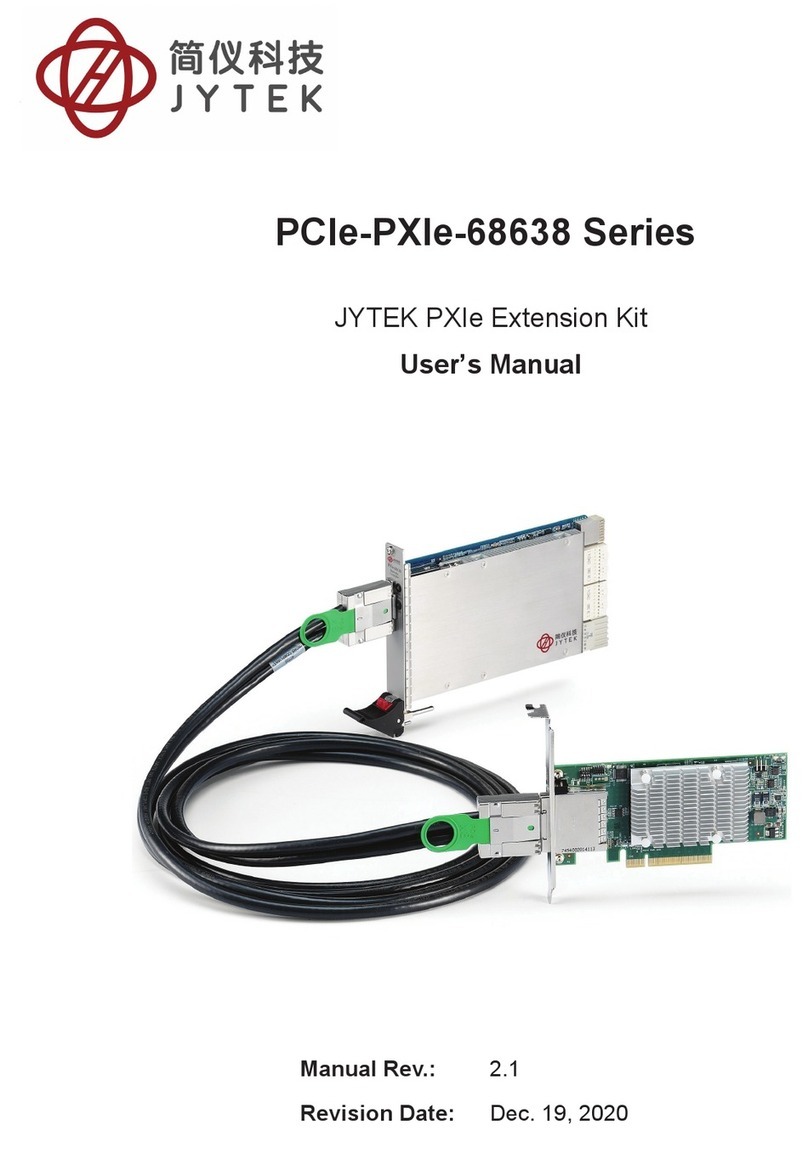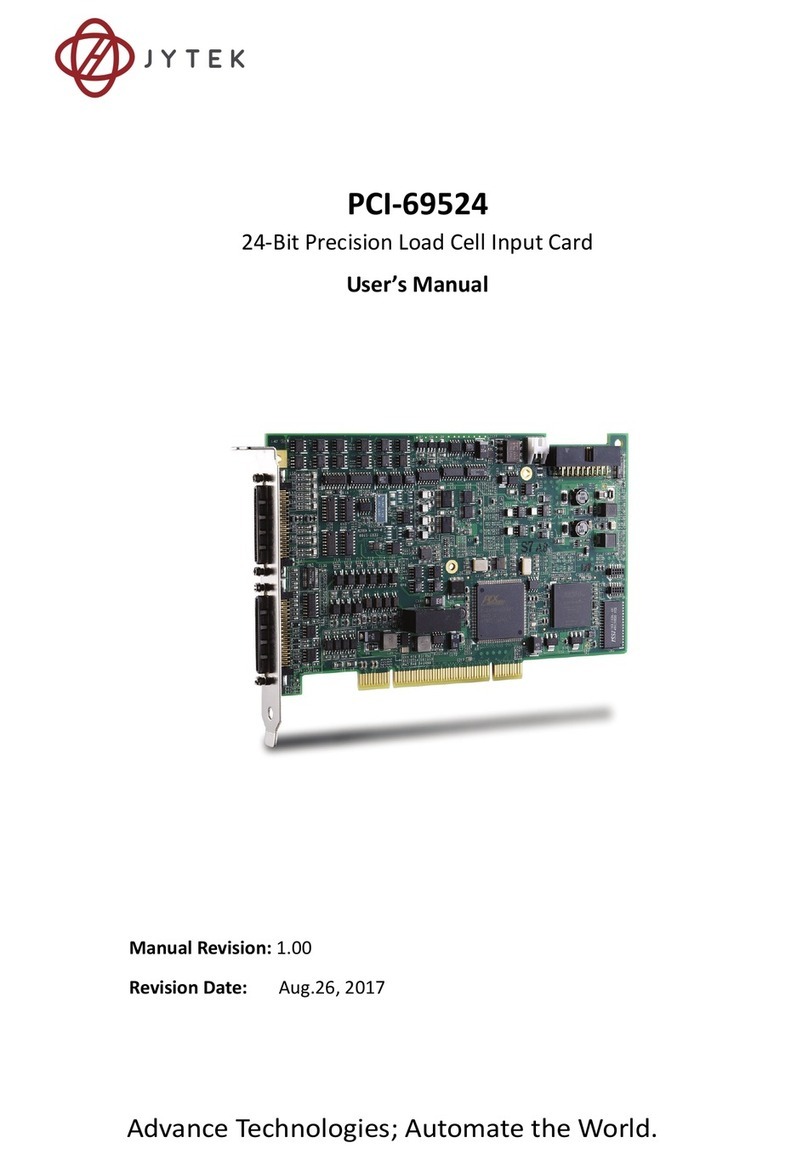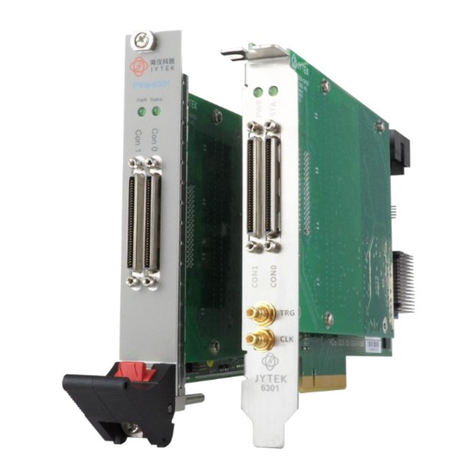V 1.0.4 JY5111 | jytek.com | 10
2. Table of Contents
Table of Contents
1. PCIe-5111 Specifications...............................................................................................1
1.1. Main Features...............................................................................................................1
1.2. Analog Input..................................................................................................................2
1.3. Analog Output...............................................................................................................3
1.4. Counter Input Operations.............................................................................................3
1.5. PFI Specifications ..........................................................................................................3
1.6. Digital IO Specifications................................................................................................4
1.7. Basic DC AI Accuracy.....................................................................................................4
1.8. AI Bandwidth ................................................................................................................4
1.9. Basic AO Accuracy.........................................................................................................5
1.10. System Noise...............................................................................................................5
1.11. Physical and Environment ..........................................................................................5
1.12. Front Panel and Pin Definition ...................................................................................6
1.13. Accessories..................................................................................................................9
2. Table of Contents....................................................................................................... 10
3. Software....................................................................................................................16
3.1. Supported Operating System .....................................................................................16
3.2. Programming Languages ............................................................................................16
4. Order Information...................................................................................................... 16
5. JYPEDIA ..................................................................................................................... 16
6. Additional Hardware Information............................................................................... 16
6.1. Basic DC AI Accuracy...................................................................................................16
6.2. Basic AO Accuracy.......................................................................................................17
7. Additional Software Information ................................................................................ 17
7.1. System Requirements.................................................................................................17
7.2. System Software.........................................................................................................18
7.3. C# Programming Language .........................................................................................18
7.4. PCIe-5111 Series Hardware Driver .............................................................................18
